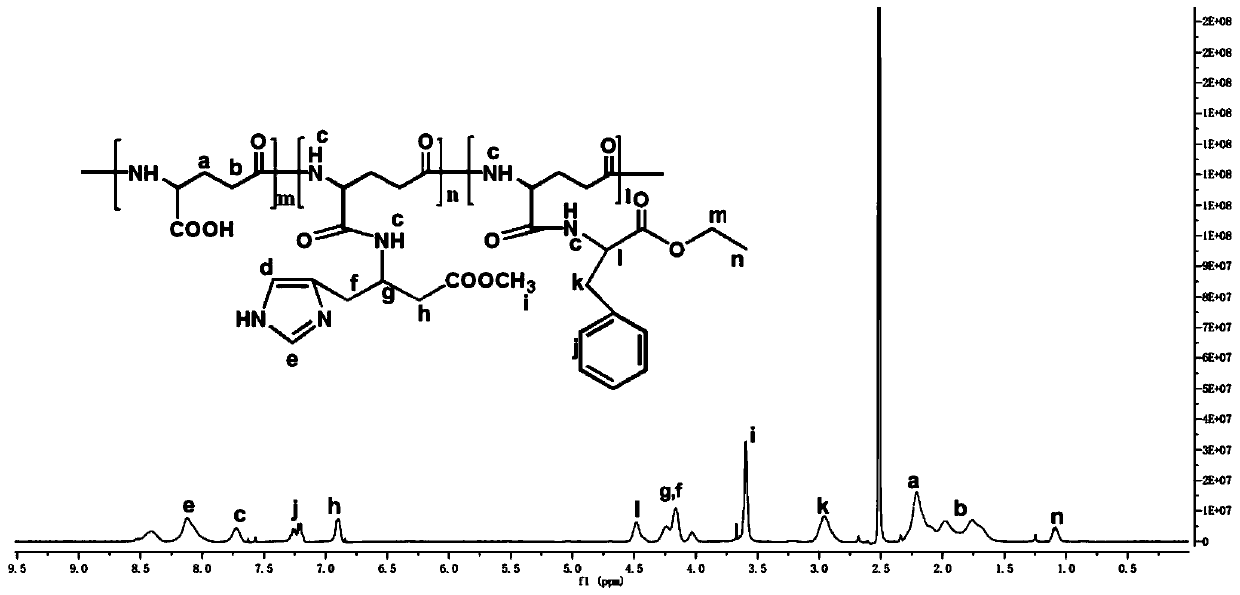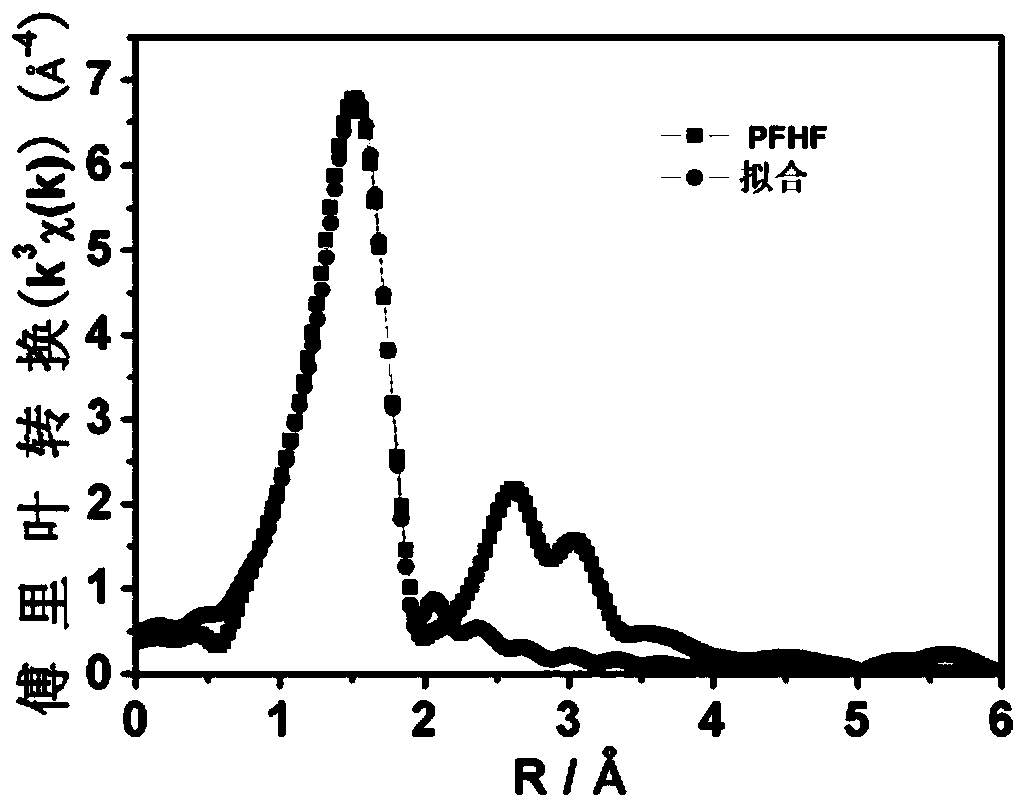Polyamino acid coordination nanoparticles, preparation method thereof and application thereof serving as drug for acoustodynamic oncotherapy
A polyamino acid and nanoparticle technology, which is applied in the direction of antineoplastic drugs, drug combinations, and pharmaceutical formulations, can solve the problems of poor biological safety and water insolubility, and achieve uniform particle size, good dispersibility, and good sound-sensitizer properties. Effect
- Summary
- Abstract
- Description
- Claims
- Application Information
AI Technical Summary
Problems solved by technology
Method used
Image
Examples
Embodiment 1
[0032] (1) 0.1mmol of γ-PGA dissolved in 50mM, 2mL NaHCO 3 The solution was placed in a 10mL reaction bottle, and stirred at room temperature until completely dissolved.
[0033] (2) Put the reaction bottle into a 100mL beaker and add appropriate amount of ice cubes for ice bath. First add 0.1mmol N-(3-dimethylaminopropyl)-N-ethylcarbodiimide hydrochloride (EDC) to the reaction flask, then add 0.1mmol N-hydroxysuccinimide (NHS), ice React under bath conditions for 10 minutes.
[0034] (3) Add 0.1 mmol phenylalanine ethyl ester (F) and 0.2 mmol histidine methyl ester (H) successively to the reaction flask, and react for 1 h under ice bath conditions; remove the ice bath after 1 h, and react at room temperature 12h.
[0035] (4) Transfer all the 2mL samples in the reaction bottle to the dialysis bag, clamp both ends with clips, put it into a beaker for dialysis, change the water every 3 hours, and continue dialysis for 2 days.
[0036] (5) Transfer the sample from the dialys...
Embodiment 2
[0039] (1)-(5) is the same as embodiment 1 step (1)-(5)
[0040] (6) Dissolve PFH in 100 μL of dimethylsulfoxide (DMSO) to prepare a 5 mg / mL solution.
[0041] (7) FeSO 4 ·7H 2 O was dissolved in 900 μL DMSO to make 8 mM FeSO 4 solution.
[0042] (8) Add the PFH solution obtained in (6) into (7), and stir for 24 hours at room temperature. Then centrifuged at 14,000 rpm for 5 min and washed three times with water to obtain polyamino acid coordination nanoparticles γ-PGA-g-F-H / Fe 2+ / Fe 3+ (PFHF).
[0043] The obtained PFHF nanospheres, using the fitting parameter table and fitting curve obtained by Extended X-ray Absorption Fine Structure (Extended X-ray Absorption Fine Structure, EXAFS), show that the coordination number of the PFHF coordination nanoparticles is 5.9, and the coordination number is 5.9. Bit key length is
Embodiment 3
[0045] (1)-(5) are the same as embodiment 1 steps (1)-(5).
[0046] (6) Dissolve PFH in 100 μL dimethylsulfoxide (DMSO) to prepare a 5 mg / mL solution; dissolve 1 mg doxorubicin hydrochloride (DOX·HCl) in 100 μL DMSO, add 2.5 μL triethylamine, Stir overnight.
[0047] (7) FeSO 4 ·7H 2 O was dissolved in 900 μL DMSO to make 8 mM FeSO 4 solution.
[0048] (8) Add the PFH solution and DOX solution (25 μL, 10 mg / mL) in (6) to (7) sequentially, and react for 24 hours at room temperature. Then 14000rpm, 5min centrifugal washing three times to get γ-PGA-g-F-H / Fe 2+ / Fe 3+ / DOX(PFHDF)
[0049] The particle diameter of the obtained PFHDF nano microsphere is about 160nm.
PUM
| Property | Measurement | Unit |
|---|---|---|
| particle diameter | aaaaa | aaaaa |
| degree of grafting | aaaaa | aaaaa |
| degree of grafting | aaaaa | aaaaa |
Abstract
Description
Claims
Application Information
 Login to View More
Login to View More - R&D
- Intellectual Property
- Life Sciences
- Materials
- Tech Scout
- Unparalleled Data Quality
- Higher Quality Content
- 60% Fewer Hallucinations
Browse by: Latest US Patents, China's latest patents, Technical Efficacy Thesaurus, Application Domain, Technology Topic, Popular Technical Reports.
© 2025 PatSnap. All rights reserved.Legal|Privacy policy|Modern Slavery Act Transparency Statement|Sitemap|About US| Contact US: help@patsnap.com



